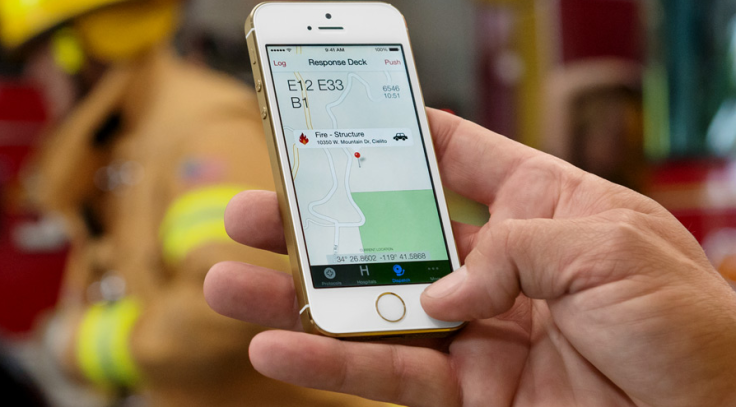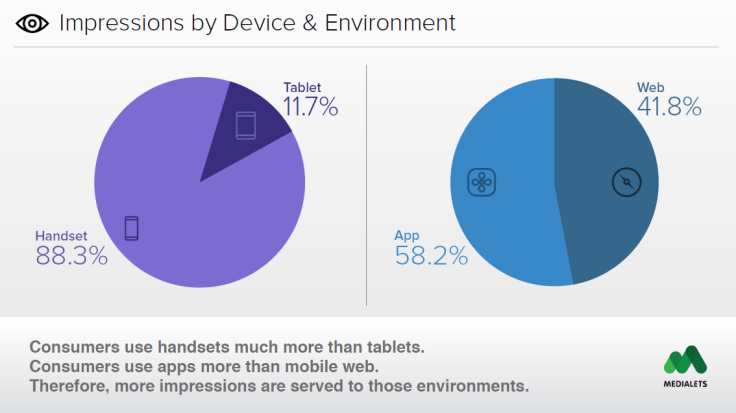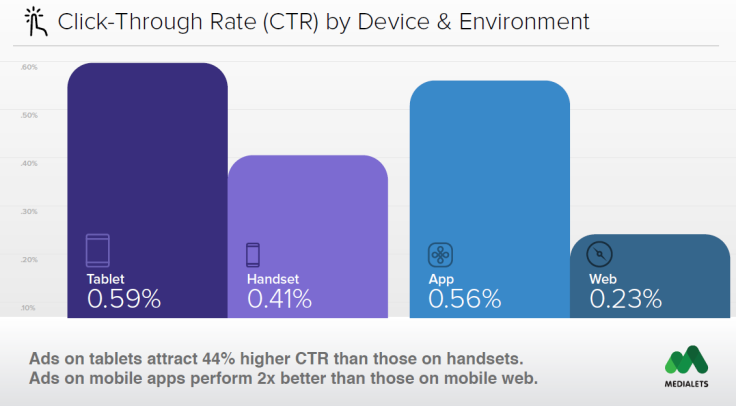Smartphone Users Spend Way More Time In Apps Than The Mobile Web: Study

The apps versus mobile Web debate is over. Apps won. Mobile apps, most built for a single purpose and downloaded from the iTunes Store or Google Play, dominate mobile traffic, data from mobile ad server Medialets, which analyzed 300 billion ad impressions in the first half of 2014, indicate.
Apps accounted for 58.2 percent of mobile ad impressions in the first half of 2014 compared to 48.8 percent on the mobile Web, the firm said. That probably underrepresents time spent in apps since mobile users are usually shown just one ad per page in apps but many on each Web page. But it does show the battleground for user time and attention is largely among apps, not websites, as it is in the PC-based world.

Measuring time spent on mobile devices -- let alone mobile applications -- is a difficult business because mobile browsers and apps don't use tracking cookies, bits of software on Web browsers that store information on where a user has been on the Web. Medialets is the world's largest ad server and gathered its data from the top sources of ads like Google (NASDAQ:GOOGL) and Millennial Media (NYSE:MM) and Twitter's (NYSE:TWTR) MoPub, as well as advertisers like Verizon (NYSE:VZ) and Publicis Groupe (EPA:PUB), and publishers.
The preference for mobile apps shows consumers appreciate the convenience of single-purpose apps, which tend to be less bandwidth-intensive and optimized for a single task. "The experience is just so much more appropriate for the environment in which people are interacting," Medialets CEO Eric Litman said. "Consumption of so many bits of content in mobile tends to be snack-sized."
Facebook experienced this first-hand several years ago. After initially taking a near-religious stance in building its mobile experience on the mobile Web, it pivoted to apps and in two years has built a huge mobile business which accounts for 61 percent of revenue. That's great if you're Facebook or Instagram or Swing Copters and sitting on top of one of iTunes' top charts, but hard if you're a publisher trying to stand out amid millions of apps.
One reason Facebook has done so well is in-app advertising performs more than twice as well as ads on the mobile Web, Medialets data indicate. Click-through rates on ads are grievously low for advertisers, but ads in mobile apps are clicked 0.56 percent of the time, Medialets data show, compared to 0.23 percent for the mobile Web. It's unclear how much of that is attributable to the "fat finger effect" where users click accidentally.
Overall, the bigger the screen the better, for advertisers. Tablet usage is still small compared to the mobile phone -- 88.3 percent phone versus 11.7 percent tablet -- but people click on tablet ads at a much higher rate than mobile phones.

© Copyright IBTimes 2024. All rights reserved.












